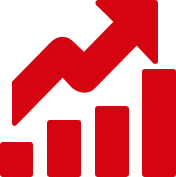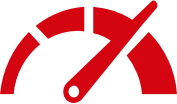on demand delivery что это
Мир стремительно становится «on-demand»
Сразу три свежих новости свидетельствуют об одной и той же тенденции. Во-первых, в Барселоне Uber начал доставлять еду: уже существующая система теперь используется еще и для ситуации «запусти приложение, выбери что-то из ассортимента ресторанов-партнеров, и водитель Uber привезет тебе это через 10 минут». Во-вторых, Amazon теперь предлагает жителям Манхэттена доставку определенных товаров в течение одного часа. В-третьих, стартап Washio, предоставляющий в нескольких американских городах «стирку на заказ» (к клиенту приезжают, забирают его грязную одежду, позже возвращают чистой и поглаженной), ввел ускоренный режим Washio Now: раньше требовалось заблаговременно записываться на конкретное время, а теперь можно нажать кнопку «приезжайте», и машина прибудет в течение часа.
Все это говорит о следующем: модель «хочу это здесь и сейчас», ранее действовавшая для такси и пиццы, стремительно распространяется на другие области. Business Insider, определив в прошлом году on-demand economy как «экономическую активность технологических компаний, отвечающую на потребительские запросы немедленным предоставлением товаров и услуг», обещал ей большое будущее — и его прогноз сбывается на глазах.
Приведенные примеры — далеко не единственное, что в мире уже можно быстро получать к своей входной двери. Есть замена массовым и предсказуемым вещам (Instacart предлагает не ходить за продуктами самому, кто купит все за тебя и привезет), а есть куда более неожиданное: Glamsquad предлагает срочно вызвать на дом стилиста (если кому-то надо прихорошиться к торжественному вечеру и нет времени отправиться в салон красоты, это может быть спасением). Не все подобные сервисы отрабатывают в течение часа (Zeel предлагает массажиста на дом «в день заказа», а Handy — «мужей на час» на следующий день), но все стремятся к сокращению сроков.
Наконец, самое показательное — появился сервис Bringg, призванный любому «бизнесу с доставкой» предоставлять соответствующий инструментарий (позволяющий, например, показывать клиенту на карте перемещение исполнителя его заказа). Это нагляднее всего показывает, что речь не об отдельных успешных проектах, а новой индустрии.
Сейчас зона действия большинства таких сервисов обычно ограничивается несколькими американскими городами — в первую очередь, Сан-Франциско, где стартаперы Долины и создают подобные проекты, и сами же охотно ими пользуются. Означает ли это, что весь рынок ограничен узкой прослойкой «технарей», а массовому потребителю такое неинтересно? Нет, скорее это означает, что история сейчас только начинается: главный ее представитель Uber тоже сначала пользовался популярностью в Долине, а теперь работает в 53 странах для самой разной аудитории.
Почему это все возникло только сейчас, если «продукты с доставкой» могли бы радовать людей и десятилетия назад? У этого есть и технологические, и социальные причины.
Мобильные устройства приучили пользователя к тому, что он больше не привязан к домашнему компьютеру или рабочим часам, виртуальное стало доступным в любое время и в любом месте. И когда различные сервисы, оперирующие с реальным миром, завели приложения для тех же устройств, пользователю захотелось получать от них такую же скорость, простоту и универсальность.
Смартфоны позволили человеку легко сообщать свое местоположение — а с помощью сервисов вроде Foursquare приучили его делать это по любому поводу. Рассказывать всему миру, где именно ты находишься, стало привычным делом — а в этом случае проще становится сообщать о том же какому-либо сервису.
Смартфоны также позволили таким сервисам вместо собственного штата исполнителей легко прибегать к услугам фрилансеров, которые просто открывают приложение и видят заказы пользователей (благодаря этому взлетел Uber, о чем я недавно писал на Мегамозге). Поскольку исполнители в таких сервисах постоянно перемещаются по городу, существовавшие ранее компьютерные аналоги им не подходили.
Наконец, из-за логистики технологическая часть здесь гораздо сложнее, чем может показаться на первый взгляд: это ситуация, когда точки заказов на карте вспыхивают в произвольных местах в произвольное время, и необходимо моментально реагировать на постоянно меняющуюся ситуацию. На разработку алгоритмизированного прокладывания маршрутов, позволившего Washio сократить время выполнения заказа до часа, у компании ушло полгода. Показателен также опыт UPS, появившихся задолго до on-demand-бума, но сталкивающихся с той же проблемой оптимизации маршрутов: их программа Orion выбирает лучшие варианты из числа с 198 нулями.
Хотя некоторые предостерегают о «пузыре», как всегда бывает в подобных случаях, будущее здесь выглядит очень оптимистичным: резкий рост популярности подкреплен соответствующей доходностью. Если другие стартапы могут при громадной аудитории не представлять, как ее монетизировать, то у представителей on-demand economy с первым же пользователем появляется живой денежный поток (хотя здесь и возможна низкая маржинальность из-за высокой конкуренции).
Сложнее следующий вопрос: что это все значит для России, ждет ли волна on-demand economy нас, и стоит ли российским стартаперам срочно делать такие сервисы? И здесь есть опасения: например, в России куда сильнее распространены платежи наличными, а сервисам с фрилансерами-исполнителями подходит оплата с карточки (чтобы все транзакции проходили через сервис, так что исполнитель с потребителем не могли его обмануть, договорившись напрямую).
Но для российских стартаперов есть и свои преимущества. В то время как Instagram един для всего мира, российские пользователи охотно в нем сидят, и отдельный «российский Instagram» им не требуется, в случае с on-demand все иначе. Поскольку такие сервисы не могут запуститься сразу во всем мире, они подключают регионы поочередно, и до России очередь явно дойдет нескоро — так что сейчас можно успеть сделать аналог уже успешного в США сервиса и завоевать российский рынок до прихода конкурента.
А кроме того, отдельных примеров on-demand или близких к этому явлений в России уже сейчас становится все больше. Uber запустился в Москве с Петербургом и оказался востребованным. К давно существующему YouDo, предлагающему заказчикам и исполнителям бытовых поручений находить друг друга, недавно добавился «Яндекс.Мастер». А сеть гипермаркетов «Окей» на днях запустила интернет-магазин — очевидно, придя к выводу, что достаточное количество российских покупателей дозрело до отказа от традиционной модели похода за продуктами и хочет выбирать их на экране. Все это говорит о том, что предпосылки для on-demand бума есть и у нас.
delivery on demand
Смотреть что такое «delivery on demand» в других словарях:
Demand leveling — is the deliberate influencing of demand itself or the demand processes to deliver a more predictable pattern of customer demand. Some of this influencing is by manipulating the product offering, some by influencing the ordering process and some… … Wikipedia
Delivery Reliability — (DR) is a broadly used standard KPI measurement in supply chains to measure the reliability of a supplier s delivery date confirmation for a customer s demand. Following the nomenclature of the DR DP Matrix, three main approaches to measure DR… … Wikipedia
Delivery Performance — (DP) is a broadly used standard KPI measurement in supply chains to measure the fulfillment of a customers demand to the wish date. Following the nomenclature of the DR DP Matrix three main approaches to measure DR can be distinguished: Type of… … Wikipedia
Demand flow technology — (DFT) is a strategy to define and deploy business processes in a flow, driven in response to customer demand. DFT is based on a set of applied mathematical tools that are used to connect processes in a flow and link it to daily changes in demand … Wikipedia
demand — vb Demand, claim, require, exact are comparable not as close synonyms but as sharing the basic meaning to ask or call for something as due or as necessary or as strongly desired. Demand strongly implies peremptoriness or insistency; if the… … New Dictionary of Synonyms
delivery — de·liv·ery n pl er·ies: an act that shows a transferor s intent to make a transfer of property (as a gift); esp: the transfer of possession or exclusive control of property to another actual delivery: a delivery (as by hand or shipment) of actual … Law dictionary
Delivery Health Girl: The Moisture of Silken Skin — Theatrical poster for Delivery Health Girl: The Moisture of Silken Skin (2002) Directed by Yutaka Ikejima[1] … Wikipedia
demand — I. noun Date: 13th century 1. a. an act of demanding or asking especially with authority b. something claimed as due 2. archaic question 3 … New Collegiate Dictionary
Delivery point (futures trading) — In a futures contract where the underlying is a physical object, such as grain or oil, the price of the futures contract is quoted assuming delivery of that physical object to a specific physical location in the world.[1] For instance, natural… … Wikipedia
demand notice — A notice a firm submits via the Deliveries system requesting assignment of live cattle delivery. The CME clearing house fills these demands to the extent possible, given certificates tendered. If the CME clearing house assigns the demand to a… … Financial and business terms
Экспорт для интернет-магазинов
Трансграничная онлайн-торговля растет на 25% ежегодно. Вы можете присоединиться к этому росту прямо сейчас. А DHL Express поможет вам в этом. Нашими клиентами являются десятки тысяч интернет-магазинов по всему миру, для которых мы ежедневно доставляем более 170 000 международных заказов. Наши возможности помогут вам в кратчайшие сроки выйти на рынок международной онлайн-торговли и доставлять заказы вашим клиентам быстро и просто.
Давайте вместе использовать возможности, которые открывает глобальная электронная торговля!
НАША СОБСТВЕННАЯ СЕТЬ
Мы предлагаем максимально поздние сроки приема грузов. Это означает, что вы сможете продать больше товаров и отправить их в тот же день.
Заказы ваших клиентов не передаются третьим лицам и посредникам: это означает, что ваши грузы находятся в безопасности, ваши клиенты могут отслеживать движение груза на всем пути следования, а у вас будет подтверждение о доставке заказа получателю
ТАМОЖНЯ
У нас самый большой опыт в таможенном декларировании, мы знаем требования всех стран мира. Специально выделенная группа таможенных специалистов всегда готова проконсультировать вас.
Все исследования показывают, что покупателей беспокоят скрытые затраты. Необходимость оплачивать пошлины при получении заказа – может стать неприятным сюрпризом для вашего клиента. C DHL вы можете оплатить таможенные пошлины за получателя, сообщив об этом на своем сайте. Это увеличит конверсию и улучшит опыт взаимодействия с вашим онлайн-магазином.
РОСТ
Опция международной экспресс-доставки позволит вашему онлайн-магазину выйти на глобальный рынок, что согласно исследованиям, поможет увеличить выручку онлайн-магазина от 15%.
Экспресс-доставка и легкий процесс возврата товара приведет к увеличению среднего чека и продаж!
СКОРОСТЬ
DHL была и остается первопроходцем в сфере международной экспресс-доставки. Наша компания обеспечивает высокую скорость доставки – это как раз то, что ожидают от вас клиенты
Ориентировочные сроки доставки заказов вашим клиентам (при отправке из Москвы):
ГЛОБАЛЬНЫЙ ОХВАТ
Спрос в электронной торговле является глобальным, наши клиенты в сфере электронной торговли за прошлый год продали свои товары в более чем 180 странах мира!
Благодаря DHL вы можете в кратчайшие сроки сделать доступным ваш товар для всего мира.
IT-ИНТЕГРАЦИЯ
Полная интеграция ваших платформ с DHL Express, означает сокращение времени обработки заказа, а значит снижение ваших затрат. А новое приложение DHL Express Commerce, интегрированное с маркетплейсами Ebay, Amazon, Etsy, а также с платформами для интернет-магазинов Magento, Shopify, Woocommerce и другими, поможет интегрировать DHL Express в ваши логистические процессы в течение часа.
БРЕНД
Наш бренд известен по всему миру. Ваши клиенты знают его, а значит будут больше доверять вашему интернет-магазину и вашему бренду, что поможет увеличить конверсию вашего сайта
ODD — ON DEMAND DELIVERY
ODD — это специальная электронная платформа для клиентов интернет-магазинов, позволяющая им выбирать способ получения их заказа. С помощью ODD можно:
Эти опции дают дополнительную гибкость вашим клиентам, помогают значительно улучшить клиентский опыт за счет увеличения % грузов, доставленных с первой попытки.
Платформа работает в 167 странах мира и разговаривает на 42 языках, что делает этот сервис по-настоящему глобальным.
ЦЕНООБРАЗОВАНИЕ
Заключив договор с DHL, вы получите возможность оплачивать услуги доставки с 0% НДС. Если вы работаете на упрощенной системе налогообложения, стоимость доставки для вас и для ваших покупателей становится на 20% дешевле
Мы предлагаем конкурентоспособные тарифы на международную доставку для интернет-магазинов. Заполните форму ниже для получения специального предложения. Наш коммерческий представитель свяжется с вами в течение одного рабочего дня.
Вы являетесь представителем интернет-магазина? Спешите получить выгодное предложение на услуги доставки ваших заказов за границу!
Types of On-Demand Delivery Apps
Do you want pizza delivered to your doorstep? Or maybe a bottle of wine? Or maybe some healthy meals designed by nutritionists? There’s an app for that! Lots of people enjoy the possibilities that on demand delivery companies offer. From food delivery to laundry and home care services, dedicated on-demand delivery apps make our lives more convenient than ever.
On-demand services are an integral part of modern life. Their benefit is obvious. They offer a win-win solution for providers and customers.
Having developed plenty of on-demand apps, SteelKiwi has fresh insights into their core advantages, use cases, and must-have features. Let’s take a closer look.
Major benefits of on-demand apps
On-demand delivery apps are of great benefit to their users because they’re:
An on-demand service provides consumers with a great opportunity to place orders in a flash. Searching, booking/scheduling, paying, and reviewing orders can be handled within one app. Simply tap a button and get what you need.
Cheap
Each on-demand delivery service has different prices and timing, so both business owners and customers can choose the service that fits their budget. From the customer’s perspective, on-demand apps offer hot deals and special promotions on a daily basis. Business owners can save money with these apps since they don’t have to invest in logistics, vehicles, and full-time couriers to deliver their products. On-demand services take care of it. The on-demand model is based mainly on independent contractors using their own means of transport. According to Bloomberg, this saves business owners a lot of money as there’s no need to pay payroll taxes, insurance, vacation time, sick days, and so on.
Convenient
Transparent
Being transparent with customers contributes to establishing trust. To ensure transparency and build trust, on-demand delivery applications are fitted with feedback systems. Feedback systems also let providers discover gaps in their performance and fix them.
Types of on-demand delivery apps
Users of on-demand delivery apps
All on-demand delivery applications are intended for service providers and customers. For a service to work perfectly with these two user groups, on demand app developers often build separate applications for each of them.
In addition to providers and customers, gig economy workers make up a significant part of all on-demand app users. These workers are independent contractors (e.g. drivers, bicycle couriers) who work part-time and decide on their own work hours. Gig workers function as intermediaries between service providers and customers. The most common on-demand services they provide, according to the UK Department for Business, Energy and Industrial Strategy, are courier services, transportation, and food delivery. Many gig economy workers work for companies with high-demand services, such as Uber(18% of those who have been engaged in the gig economy work), PeoplePerHour(12%), Deliveroo(12%), and Fiverr(10%).
On-demand economy business models
Based on what users are involved in providing the service, on-demand applications can be divided into three types:
Enterprise to Person (E2P) / Business to Consumer (B2C)
B2C apps facilitate transactions of goods or services between providers and customers. McDelivery, Booking.com, and Starbucks are examples of B2C apps. The Starbucks app is an online self-service application that lets users skip the line by ordering and paying in advance or having their favorite coffee delivered right to the doorstep.
Enterprise to Enterprise (E2E) / Business to Business (B2B)
B2B apps are mobile solutions that created to connect businesses. These apps support transactions globally. Cargomatic, Eventio, and Catalantare good examples of B2B apps. Eventio, for example, is an on-demand app that helps businesses and individuals find venues for events at any level. The application provides its users with a list of available locations. Once a customer chooses a place, they can look for supplementary services such as security, catering, cleaning services, and DJs/bands. Invited guests or the general public can then purchase tickets via the app.
According to the nature of platform content, B2B apps can be divided into:
Person to Person (P2P) / Consumer to Consumer (C2C)
These apps enable platform users to exchange products or services. Customers can sell to or buy from other customers via a C2C app. In these apps, all users have the same rights and aren’t considered entrepreneurs. These kinds of applications are getting popular since they save money. Successful platforms that use this model include BlaBlaCar, eBay, and Etsy. BlaBlaCar, for instance, assists its users in finding co-travelers. Users can find or offer rides online by giving details on points of departure and arrival and travel dates. Once a ride seeker finds the perfect ride, they can book a seat and the driver gets their co-traveler’s contact information to arrange the details.
On-demand delivery use cases and examples
An on-demand delivery app is an excellent solution for local businesses. Despite the competition, an on-demand app is relevant for those who are starting a business as well as for those who are already on the market but don’t have an application. To better match market demand, you should consider the top industries involved in the on-demand economy.
Having groceries or meals delivered anywhere and anytime is nothing new. The best food delivery apps include Uber Eats, Instacart, Grubhub, and Doordash. These meal delivery apps offer multiple benefits for both customers and restaurants. Restaurant owners get more orders and can manage them efficiently. Users, in turn, are provided with easy access to user-friendly menus.
Food industry is the major niche of the on-demand delivery market which offers many solutions including restaurant and grocery delivery app development, pizza delivery app development, and alcohol delivery app development services.
Speaking of food apps, we also need to mention Postmates. It’s quite different from the other platforms we’ve just mentioned. Postmates provides an app where you can order anything and get door-to-door delivery ranging from furniture delivery to milk delivery.
Healthcare
On-demand medical applications connect patients with doctors. Doctor on Demandis a great example of an on-demand mHealth app. The application enables users to connect to doctors one-on-one using their mobile devices wherever and whenever needed. Just like during an in-person doctor visit, during a mobile consultation a physician performs an examination and makes recommendations. And these services are available 24/7, which is convenient.
In addition to doctor on-demand apps, there are medicine delivery app development services that let users get medications delivered straight to the doorstep. Great examples are 1mg, PharmEasy, Myra, and NowRx.
Transportation & logistics
Today, on-demand logistics services are being vastly enhanced. These services are popular because they offer:
A great example of a transportation app is Uber Freight, an app that helps customers transport their freights flawlessly. The other Uber package delivery service is UberDELIVER. It allows customers to deliver parcels anywhere anytime.
Taxi services
On-demand cab service apps are of great help today, since they offer:
Uber has been the major player in this sector. Yet there are a great number of companies providing Uber like services, including Lyft, Juno, and Flywheel Taxi.
Home services
Driven by market demand, house cleaning and repair applications are now more popular than ever. This is a perfect solution for those who want cleaning help or any other assistance with a single click. Apps that have gained popularity in this niche include TaskRabbit, Handy, Merry Maids, Homejoy, and Slate.
Car rental services
If you urgently need a car but don’t have one, that’s no longer a problem. Thanks to car rental services such as Turo, Avis Car Rental, Zipcar, and easyCar, you can:
Flowers and gifts
No time to buy a present or just forgot about your wife’s birthday? It happens. But the solution to this problem is simple. Applications like Uber flowers, UrbanStems, Gyft, and Giftagramoffer a wide variety of gifts delivered to the recipient’s doorstep.
Today, flower delivery app development is one of the solutions to enter the on-demand market. These applications attract users because of their features which include:
On-demand food delivery apps
Food has been the sector most disrupted by the on-demand economy. Each year, more and more startups are entering the market, trying to offer alternatives to Uber Eats.
To understand how food apps work, you should first know the different types. All on-demand food delivery applications fall into one of three categories:
Must-have features for an on-demand delivery app
Since some delivery companies decide to create separate apps for each user — customers, couriers, and business owners — we’ll highlight the features of each app separately.
Customer app features
Registration/login page
The user’s journey begins here. So it’s essential for the user registration screen to be attractive and easy-to-use. For convenience, you can let customers log in with social media accounts. This greatly simplifies the login process.
Profiles
When a user has created an account, they need to have access to their personal profile. This profile can include personal data, information about favorite places, services, or items, order history, and saved payment options.
Search
Search is an undoubtedly important element. Search results should include detailed product or service information, prices, addresses, and reviews.
Order placement
Once a user has decided what product or service they want, they should be able to add that product or service to a cart. They should also have an option to remove items from the cart or add more items. Users should also be shown the total cost of items in the cart.
Scheduling
This includes the ability to schedule a delivery so it arrives when a user needs it.
Payment
An on demand delivery app should provide users with different payment options. Users should be able to pay via credit card or debit card.
Geolocation
This function allows you to obtain a user’s location in order to provide services. Geolocation also helps customers find nearby restaurants and stores.
Real-time tracking
Customers should be able to track the current location of an item.
In-app messaging
With built-in messaging features, customers can communicate with couriers.
Push notifications
Push notifications are a valuable tool as they provide users with information on delivery statuses, time remaining for deliveries, and courier locations.
Rating & review systems
Users should be able to leave feedback on the service or delivery personnel. Leaving reviews and ratings helps to build trust on the platform.
Admin app features
Content management
This feature is intended for admins so they can provide customers with information about prices, work hours, and contact details. The service provider should also be able to delete any item or change its price.
Order management
This function tracks orders in real time. This page can include some information on the product or service, such as its quantity and any additional details.
Customer support module
This is one of the most important tools and helps admins manage and track customer concerns and requests using live chat. It enables admins to receive questions from users and answer them in just a few seconds.
Accounting module
One of the objectives of an admin app is to ensure comprehensive access to financial information (payment details).
Courier app features
Personal accounts
A personal account should include a courier’s personal information and ratings.
Order management
This function allows a delivery worker to view and accept orders.
In-app messaging
Messaging allows couriers to communication with clients.
GPS support
When dispatching lots of parcels every day, it’s important not to get lost. That’s why GPS support is of great significance. With GPS tracking in an app for delivery, couriers are able to get coordinates of customers.
How much does a local delivery app development cost?
Are you ready to develop a local delivery app like Postmates? Or maybe you’re more interested in an Uber type delivery service and don’t know how much it will cost? Let us help you.
We recently built an on-demand platform called Hello Barber. This app helps hairdressers and barbers get in touch with customers. The application took us 2,825 hours in total:
This app took more time than planned because of challenges we faced related to supporting four different time zones and automatic payments. Our team nevertheless found perfect solutions for these challenges, and Hello Barber is now fully functioning.
Your Living-room Traineris another example of an on-demand platform we’ve developed. This app allows users to exercise with a coach whenever and wherever they like using live video chat. We spent 935 hours creating it.
For the app to meet all the needs of providers and customers, we implemented these following tools:
Start developing your on-demand app today!
The variety of on-demand delivery apps allows you to provide a solution for any imaginable need. With an on-demand application, you can reach a wider audience and make your brand known.
If you’re interested in developing any kind of on-demand app, our team would be more than happy to help you make your idea a reality. Don’t hesitate to contact us if you have any questions.




















